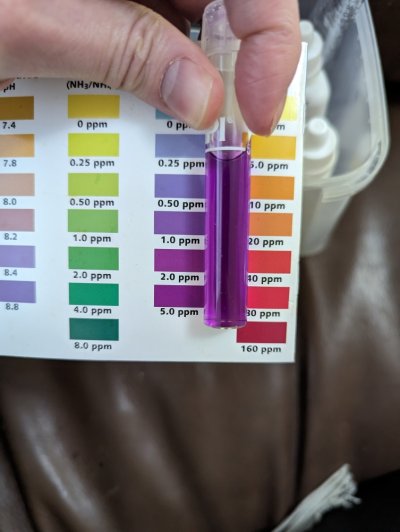Hello again!
Yet another newbie question ...
I've had my tank for a few weeks now and was trying a fish-in cycle with a few platys. Unfortunately, looks like they came sick from the store and all three passed this week.
Here is my question - all dead fish have been removed and the latest measurements are as follows:
Ammonia - 0 (been zero for a few days already)
Nitrites - seems like between 2-5 ppm (hard to tell exactly). I did a water change before the last two fish died which brought the nitrites down to 2 but it looks like they're creeping up
Nitrates - looks like 5 ppm but I realize that may be a false positive
I am planning on going to my LFS on Sunday (it's not so close and I don't have too many options to go during my schedule) to get a few more fish (likely 3 more platys) and some live plants.
What can I do to try and make the cycle move faster (and possibly even finish?) to be as safe for the new fish as possible when I get them?
I called the LFS and they recommended adding a pinch of food (which I've done), and add SeaChem stability every day until Sunday.
Is this good advice? I was thinking of adapting this slightly, as follows:
- do a large water change to get the nitrite level down Thursday (add Prime during the water change)
- Sunday morning, before going to the fish store, add a bottle of Tetra SafeStart Plus
And then go and get the plants/fish.
Thoughts?
Yet another newbie question ...
I've had my tank for a few weeks now and was trying a fish-in cycle with a few platys. Unfortunately, looks like they came sick from the store and all three passed this week.
Here is my question - all dead fish have been removed and the latest measurements are as follows:
Ammonia - 0 (been zero for a few days already)
Nitrites - seems like between 2-5 ppm (hard to tell exactly). I did a water change before the last two fish died which brought the nitrites down to 2 but it looks like they're creeping up
Nitrates - looks like 5 ppm but I realize that may be a false positive
I am planning on going to my LFS on Sunday (it's not so close and I don't have too many options to go during my schedule) to get a few more fish (likely 3 more platys) and some live plants.
What can I do to try and make the cycle move faster (and possibly even finish?) to be as safe for the new fish as possible when I get them?
I called the LFS and they recommended adding a pinch of food (which I've done), and add SeaChem stability every day until Sunday.
Is this good advice? I was thinking of adapting this slightly, as follows:
- do a large water change to get the nitrite level down Thursday (add Prime during the water change)
- Sunday morning, before going to the fish store, add a bottle of Tetra SafeStart Plus
And then go and get the plants/fish.
Thoughts?

 If you go with more Platies and for most fish, healthy ones will have their fins erect and be actively swimming. If there are fish in the store's tank not looking like this, do not buy from that tank. )
If you go with more Platies and for most fish, healthy ones will have their fins erect and be actively swimming. If there are fish in the store's tank not looking like this, do not buy from that tank. ) 
